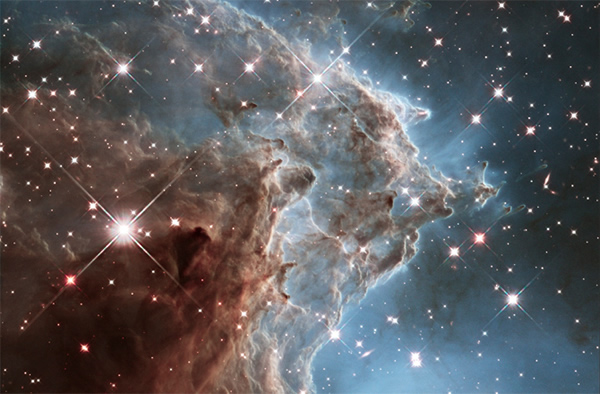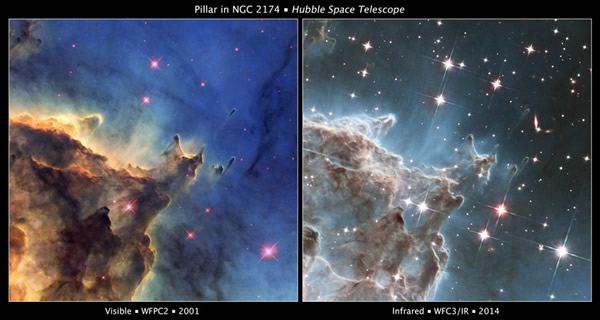Newborn Stars Blast Gas Inside a Monkey's Head
A new Hubble infrared image showing part of NGC 2174, aka the Monkey Head nebula.
The bright young stars and glowing wisps of gas and dust in the image above are part of NGC 2174, the Monkey Head Nebula, located 6,400 light-years away in the constellation of Orion. The infrared data making up the stunning image were acquired with the Hubble Space Telescope’s Wide Field Camera 3 (WFC3) instrument from Feb. 7-23, and released in celebration of Hubble’s 24th year in orbit.
In other words, it may be Hubble’s birthday but we all get the gift!
The fantastic shapes of the enormous cloud-like structures are the result of powerful stellar winds streaming out from the newborn stars visible along the right side of the image. Ultraviolet radiation from the stars plows into the cold banks of dust and hydrogen gas surrounding the region, causing them to glow in infrared wavelengths and carving out billowing pillars, some nearly a light-year or more in length.
Hubble had previously imaged the same area in 2001 in visible light; these new infrared observations show much more intricate details of the nebula.
Visible-light and infrared images of NGC 2174
The region seen here is about six light-years across and shows the “eye” of the nebula’s profiled “monkey head.” Watch a video zooming in to the region here.
Hubble was launched aboard Space Shuttle Discovery (STS-31) on April 24, 1990 and deployed into orbit the following day. A conference is being held this week in Rome, Italy, celebrating its 24th anniversary and kicking off a year of Hubble highlights leading up to the spacecraft’s 25-year anniversary in 2015.
Sources: HubbleSite.org and ESA.(Mar 18, 2014 11:26 AM ET // by Jason Major )













